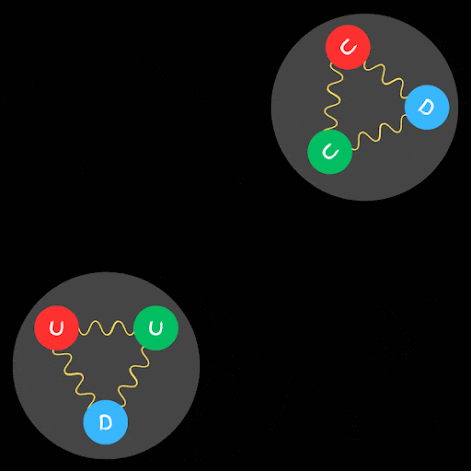Why Don't Positively Charged Protons Fly Apart?
Protons are positively charged and they repel each other due to the electrostatic force with about 300N.
But there is an even stronger force that keeps the nucleus together.
It is a residual force of a strong force, known as the 'Strong Nuclear Force'.
For understanding the 'Strong Nuclear Force' must see my previous post on 'Strong Force'.
Let us take an example of an atom - When an atom is seen from far, it seems to be electrically neutral. But when we are close to its nucleus, we can feel its positive charge.
A similar thing happens with the quarks in the nucleons(proton or neutron). When the nucleons get close, the quarks feel each other's presence.
So, a quark from one nucleon will want to tug onto a quark from a neighbouring nucleon.
But they can't exchange a gluon to do that, because gluons have a colour charge, so exchanging gluons would cause the nucleons to no longer be colour neutral and this is not allowed.
To feel a strong force properly, the nucleons have to exchange a neutral particle.
How it Goes
The pair of nucleons gets close, and a quark from one nucleon gets pulled towards the other.
The flux tube extends,
and snaps exactly at the point when there is enough energy to create 2 new quarks. One remains in the nucleus, while the other forms a quark anti-quark pair with the old original escaped quark. This is called a meson and it is colour neutral because it is the same colour it is the same colour and anti-colour. e.g. Green-Antigreen.
It is colour neutral, so it can be absorbed by the other nucleon, without breaking any laws of physics.
The nucleon's quarks annihilate with the anti-quarks of the meson.
Ultimately, we will be left with two nucleons of the same type we started with, but now they have communicated the strong force indirectly.
This process exchanged energy and momentum, binding the particles together.







Comments
Post a Comment